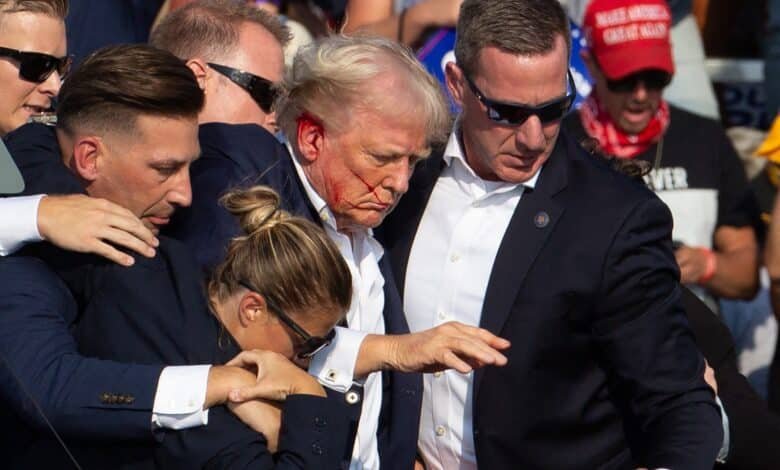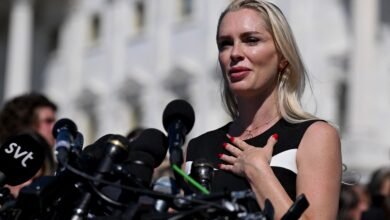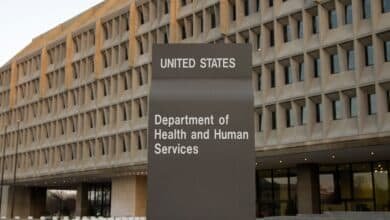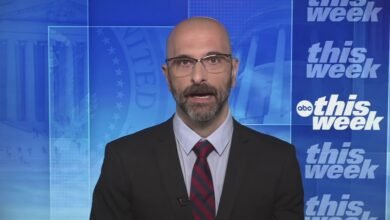A year after Trump’s shooting: Remember a fallen hero and calculate with a safety collapse

A year ago, the attempted murder of the then presidential candidate Donald Trump in Butler, Pennsylvania, marked a fundamental and deeply worrying moment for the nation, and especially for the United States Secret Service, the agency accused of protecting the main leaders of the United States.
The attack, which occurred in a campaign manifestation, claimed the life of Fire Chief Corey Equivore, who was protecting his family during the shots. His death stressed the tragedy of what many now describe as a catastrophic security period.
For an agency with what has been described as a “Zero-Fail Mission”, the events of July 13, 2024 raised urgent questions about systemic failures.
In the days and months that followed, at least five separate investigations were launched, including the internal reviews of the Secret Service, FBI, Department of National Security (DHS), as well as probes of both Chance Chambers. The findings highlighted a variety of failures, from lapses in the exchange of intelligence to the gaps in the coordination of events and the local application communication.
A year later, the Secret Service launched a public update Describe 37 reform measures in response to those findings.

Republican candidate Donald Trump is seen with blood on his face surrounded by secret service agents, since he is taken from the stage in a campaign event at Butler Farm Show Inc. in Butler, Pennsylvania, on July 13, 2024.
Rebecca Droke/AFP through Getty Images, file
These recommendations echoed in reports of the Chamber’s Task Force and the National Security Committee of the Senate and Government Affairs. However, what is left unanswered is a more fundamental question: how a world renowned protection agency allowed such breakdown to occur?
A long way from September 11 to Butler
To understand the present, many experts point to the past, specifically the restructuring after 9/11 of the national security apparatus of the United States.
The terrorist attacks of September 11, 2001 were the result of a detailed planning of Al-Qaeda and Osama Bin Laden, who had long seen the presidency of the United States as a main objective, according to an ABC news analysis.
The Federal Government responded with radical reforms, including the creation of the Department of National Security in 2003. The agencies, including the Secret Service, formed by the Treasury Department, were absorbed by DHS.
The change significantly extended the responsibilities of the Secret Service. The agency’s protective mission not only doubled, but also assumed an improved research role under the patriotic law. However, unlike other federal agencies that received substantial increases in budget and personnel, the resources of the secret service only grew modestly.

In this archive photo of July 18, 2024, a truck is shown near Butler, Pennsylvania, decorated to cry to the former fire chief Corey Comprehensive, who was shot dead during the attempted murder attempt of the former president of the United States, Donald Trump, in a campaign demonstration five days before.
Kyodo through Newscom, file
For example, in 2001, the FBI operated with a budget of $ 3.3 billion and around 25,000 staff. By 2025, the agency reported it requested $ 11.3 billion and uses more than 37,000 employees.
In contrast, the secret service budget increased from $ 859 million in 2001 to just over $ 3 billion today, with a workforce of approximately 8,000, According to a national security report.
Despite its expanded mission, the agency faced persistent challenges of recruitment and withholding similar to the shortage of police personnel observed throughout the United States, according to the International Association of Non -Profit Police Chiefs.
“The contributing factors include challenges of personnel, high rotation and public criticisms derived from the pandemic, reported incidents of misconduct and the movement of ‘defining the police'”, the movement “, the IACP saying.
Delayed reforms, warnings ignored
The structural problems of the secret service were not unknown. A series of high profile incidents, including perimeter infractions of the White House and security threats during the 2016 campaign, promised calls from legislators for reform.
In 2015, a Chamber Supervision Committee Report Entitled “The Secret Service: An agency in crisis” established key recommendations, which include expanded training, personnel increases, technology integration and a more unified federal protection strategy.
The agency embraced those recommendations, but the implementation was unequal already often hindered by the lack of financing of the Congress. A 2016 report from the National Academy of Public Administration In addition, he emphasized that the secret service was still in “early transformation stages” and warned that “budget limitations and personnel inevitably lead to compensation.”
According to the recent Congress dataThe number of personnel assigned to protection missions has decreased, the defeat of 4,027 in fiscal year 2014 to 3,671 today.
What is changing now and what is not?
Following the Butler shooting, the director of the Secret Service, Sean Curran, announced a Strategic review Built in five pillars: operations, human capital, resources and physical assets, training and technology. Read the Strategic Plan of the Secret Service
The agency says that its reforms include: clearer lines for protective events, improved coordination with the application of local law, improved intelligence exchange, radio transmissions recording in protective events and integration of new surveillance and threat detection technologies.

In this photo of Juy 13, 2024, republican presidential candidate, former President Donald Trump is wrinkled out of the stage during a demonstration in Butler, pa.
Anna MoneyMaker/Getty images, file
Even so, at least 10 of the 37 recommendations require actions of the Congress or Executive. These include reassessing whether the secret service must remain under DHS, increase their budget and personnel, and reduce the scope of eligible people for protection under 18 United States Code § 3056, an extended protection legacy after September 11.
Many of these problems were marked a decade ago in the DHS 2014 Protective Mission Panel ReportBut substantive legislative monitoring has remained elusive.
The mission must coincide with resources
While mistakes were clearly made in Butler, it is also true that President Trump survived due to the extraordinary courage of the secret service agents, which were placed between the shooter and the former president. His disinterest stands out as a powerful reminder of the agency’s mission and the personal risk involved in the fulfillment of it.
But as policy formulators continue to investigate and discuss long -term reforms, one thing is clear: the mission “without failure” of the secret service must coincide with the “without false” support, both from Congress and the White House.
Until then, Butler’s events will continue to be a marked warning of what happens when an elite agency can operate without the resources, staff and clarity of the mission that deserves clearly.





